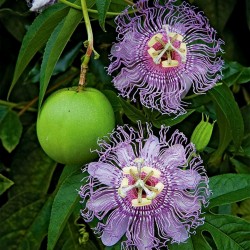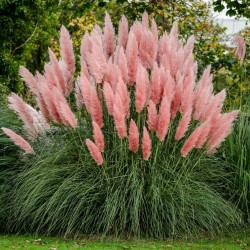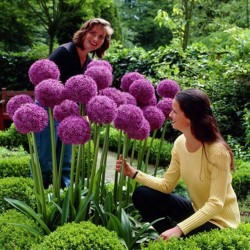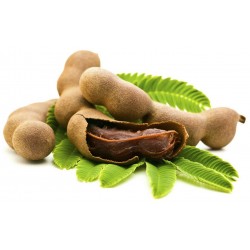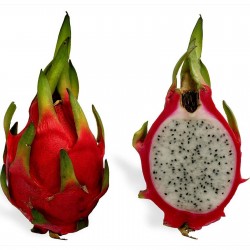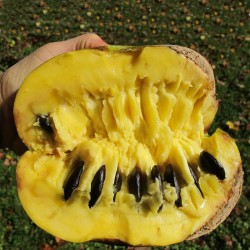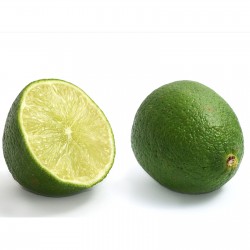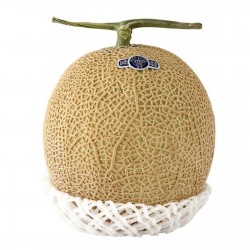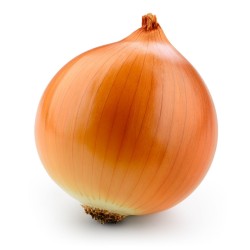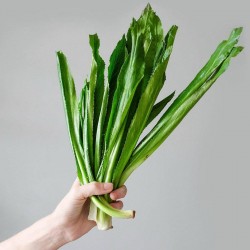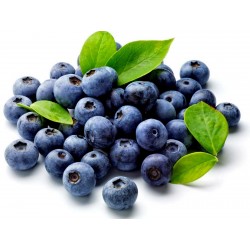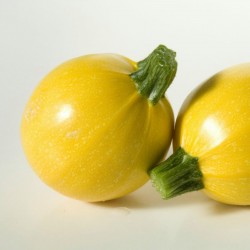Seeds Gallery Com,
5/
5
<h2><strong>Bilberry - Whortleberry Seeds (Vaccinium myrtillus)</strong></h2>
<h2><span style="color:#ff0000;"><strong>Price for Package of 5 seeds.</strong></span></h2>
<p>Ericaceae: a low, spreading shrub, up to 2ft tall, bilberry is one of the most common plants of the moorlands and mountains, growing among the heather. The green-pink bell-shaped flowers appear from April to June and are followed in July by round blue-black berries covered with a grape-like bloom. The berries, which can be used to make jam, they are also an important part of the diet of grouse and other moorland birds. Bilberry is known as whortleberry in some part of England. Native to Europe, including Britain, from Iceland south and east to Spain, Macedonia, the Caucasus and Northern Asia.</p>
<p> </p>
<p><strong>USES:</strong></p>
<p>The fruit can be used raw or cooked, they have a sweet and very tasty flavour, and they make an excellent preserve, their small seeds making them suitable for jam. A slightly acid flavour when eaten raw. The fruit can be dried and used like currants, also an herbal tea can be made from the leaves.</p>
<p> </p>
<p>The dried leaves of bilberries are used in the treatment of a variety of complaints. These leaves should be harvested in early autumn, only green leaves being selected, and then dried in gentle heat. The leaves should not be used medicinally for more than 3 weeks at a time. A tea made from the dried leaves is strongly astringent, diuretic, tonic and an antiseptic for the urinary tract. It is also a remedy for diabetes if taken for a prolonged period. Another report says that the leaves can be helpful in pre-diabetic states but that they are not an alternative to conventional treatment. The leaves contain glucoquinones, which reduce the levels of sugar in the blood. A decoction of the leaves or bark is applied locally in the treatment of ulcers and in ulceration of the mouth and throat. A distilled water made from the leaves is an excellent eyewash for soothing inflamed or sore eyes. Whilst the fresh fruit has a slightly laxative effect upon the body, when dried it is astringent and is commonly used in the treatment of diarrhoea. The dried fruit is also antibacterial and a decoction is useful for treating diarrhoea in children. The skin of the fruits contains anthocyanin and is specific in the treatment of hemeralopia (day-blindness).</p>
<p> </p>
<p><strong>GROWING INFORMATION:</strong></p>
<p>Sow late winter in a greenhouse in a lime-free potting mix and only just cover the seed. Stored seed might require a period of up to 3 months cold stratification before germination will take place.</p>
<p>I have found that a soak in a GA3 solution will seed up the germination, and also do away with the need for cold stratification, surface sow seeds!</p>
<p> </p>
<p><strong><em>Herbal Medicine: Biomolecular and Clinical Aspects. 2nd edition.:</em></strong></p>
<p>Bilberry (Vaccinium myrtillus L.) is one of the richest natural sources of anthocyanins. These polyphenolic components give bilberry its blue/black color and high antioxidant content, and they are believed to be the key bioactives responsible for the many reported health benefits of bilberry and other berry fruits. Although bilberry is promoted most commonly for improving vision, it has been reported to lower blood glucose, to have anti-inflammatory and lipid-lowering effects, and to promote antioxidant defense and lower oxidative stress. Therefore, bilberry is of potential value in the treatment or prevention of conditions associated with inflammation, dyslipidemia, hyperglycemia or increased oxidative stress, cardiovascular disease (CVD), cancer, diabetes, and dementia and other age-related diseases. There are also reports that bilberry has antimicrobial activity. In this chapter, bilberry and its components and characteristics are described, and evidence for the health benefits of bilberry is presented and discussed.</p>
<p> </p>
<p>The bilberry plant is a low-growing shrub native to northern Europe, but is now also found in parts of North America and Asia. Bilberry is also known as European blueberry, whortleberry, huckleberry, and blaeberry. It belongs to a large genus (Vaccinium) of plants that also contains blueberry (Vaccinium corymbosum) and cranberry (Vaccinium macrocarpon; Upton 2001). Bilberry is sometimes called blueberry because both have similar appearance and are close relatives, but the true blueberry is native to the United States (National Institutes of Health 2010). Bilberry usually grows in heaths, meadows, and moist coniferous forests, and its growth is favored by moderate shade and moderately humid ground conditions. The bilberry is a small (5-9 mm in diameter) fruit, bluish black in color, with many seeds.</p>
<p> </p>
<p>Bilberry is classified as a Class 1 herb by the American Herbal Products Association (Upton 2001), meaning it can be safely consumed when used appropriately. No mutagenic activity has been reported, and there are no cited contraindications to its use (Upton, 2001). Bilberry is sold as fresh, frozen, and dried whole berries, as well as in the form of preserves, jams, and juices, and, increasingly, liquid or powdered concentrates are sold as food supplements. Bilberry contains a variety of phenolic compounds, including flavonols (quercetin, catechins), tannins, ellagitannins, and phenolic acids, but anthocyanins make by far the largest contribution to its phytochemical mix (Upton 2001; Seeram 2008). These naturally occurring phenolic compounds are redox-active antioxidants as well as iron chelators (Benzie 2003; Zafra-Stone et al. 2007), and are found in red-, blue-, and purple-colored flowers, fruits, and vegetables. The usual daily dietary intake of anthocyanins is approximately 200 mg (Zafra-Stone et al. 2007). Bilberry has higher anthocyanin content compared to other types of berries, such as strawberry, cranberry, elderberry, sour cherry, and raspberry (Kowalczyk et al. 2003; Bagchi et al. 2004; Yildirim 2006; Cravotto et al. 2010). The total anthocyanin content of bilberry is generally in the range of 300-700 mg/100 g fresh fruit, although this range varies with cultivar, growing conditions, and degree of ripeness of the berry (Upton 2001; Burdulis et al. 2009). Along with anthocyanins, 100 g of fresh bilberry contains small quantities of vitamin C (3 mg), quercetin (3 mg), and catechin (20 mg; Upton 2001; Erlund et al. 2003).</p>
<p> </p>
<p>Although most attention has been focused on the antioxidant properties of anthocyanins in relation to health benefits of bilberry, the effects are likely to extend beyond simple antioxidant action to involve cell-signaling pathways, gene expression, DNA repair, and cell adhesion, as well as antineoplastic and antimicrobial effects (Kowalczyk et al. 2003; Packer and Cadenas 2007; Zafra-Stone et al. 2007; Seeram 2008; Benzie and Wachel-Galor 2010). Commercial bilberry products are often standardized to a 25% anthocyanidin content (equivalent to 36% anthocyanins); but this content can vary greatly (Upton 2001; Lee 2008). Recommended daily dosages also vary greatly, for example, 20-60 g of dried berries and 160-480 mg of powdered extract (Upton 2001).</p>
<p> </p>
<p><strong>ANTHOCYANINS</strong></p>
<p>Anthocyanins (from the Greek anthos for flower and kyanose for blue) are water-soluble polyphenols flavonoid compounds (Clifford 2000; Ghosh and Konishi 2007; Yoshida, Mori, and Kondo 2009). Anthocyanins are responsible for the pink, red, blue, and purple color of plants (Upton 2001). The color is pH dependent; the color is red at pH < 2, changing to blue as pH increases and finally becoming colorless at high pH. The anthocyanin molecule consists of an anthocyanidin “core” with a sugar moiety attached. The sugar can be attached at various positions, and can be glucose, galactose, xylose, arabinose, or rhamnose (Clifford 2000; Kong et al. 2003; Prior and Wu 2006). Anthocyanins vary also in the number and position of hydroxyl and methoxyl groups attached to the core anthocyanidin structure. Therefore, although there are less than 20 naturally occurring anthocyanidins, there are many hundreds of different anthocyanins (Upton 2001; Prior and Wu 2006; Ghosh and Konishi 2007; Yoshida, Mori, and Kondo 2009). The most commonly found anthocyanidins in nature are cyanidin, delphinidin, petunidin, peonidin, pelargonidin, and malvidin, but these are very rarely found in their aglycone (nonsugar) forms (Kong et al. 2003; Prior and Wu 2006). The concentrations of the main anthocyanins found in bilberry are given in Table 4.1.</p>
<p> </p>
<p>Although the function of anthocyanin pigments in plants is thought to be mainly that of attracting animals, insects, and birds for pollination or seed dispersal, anthocyanins may help in cold tolerance as well as antimicrobial and antioxidant defense of plant tissues (Benzie 2003; Kong et al. 2003). The anthocyanin content of berries varies across species and also depends on environmental factors, such as the amount of solar radiation, temperature, and soil content of nitrogen and phosphorus. The cultivation technique is also a factor affecting the total phenolic level of berries. Anthocyanins are found mainly in the skin of the berry, and damage to the fruit skin caused during harvesting decreases anthocyanin content (Upton 2001). Degrees of ripeness of berries also contribute to variation in total phenolic content—although the concentration of phenolic compounds is usually higher in unripe berries than in mature fruits, anthocyanins accumulate during bilberry maturation (Upton 2001). Anthocyanins have powerful antioxidant properties, and the content of anthocyanin pigment directly correlates with antioxidant activity of plants (Upton 2001; Bagchi et al. 2004; Yildirim 2006; Zafra-Stone et al. 2007). In addition to their antioxidant effects, anthocyanins have been reported to stabilize DNA, modify adipocyte gene expression, improve insulin secretion and sensitivity, and have antiapoptotic, anti-inflammatory, and antibacterial effects (Mas et al. 2000; Kong et al. 2003; Kowalczyk et al. 2003; Tsuda et al. 2005; Seeram 2008). These numerous and potentially highly beneficial effects of anthocyanins make foods rich in these compounds, such as bilberry, potential candidates as “functional foods” and phytotherapeutics (Cravotto et al. 2010).</p>
<p> </p>
<p><strong>BIOAVAILABILITY AND DISTRIBUTION OF ANTHOCYANINS</strong></p>
<p>Unlike other polyphenolic flavonoids, anthocyanins can be absorbed intact, that is, without removing their sugar moiety. Absorption (and renal elimination) of anthocyanins is reported to be rapid, but of low efficiency (Prior and Wu 2006). In rats, absorption takes place in the stomach and small intestine, and varies depending on the structure of the anthocyanin. Absorption ranged from 11% for malvidin-3-glucoside to 22% for cyanidin-3-glucoside (Talavera et al. 2003). Plasma anthocyanins are found in plasma a few minutes after oral administration of berries or berry extracts, but are cleared within 6 hours. In humans, anthocyanin absorption from grapes, red wine, elderberry, blackcurrant, chokeberry, hibiscus, and raspberry has been studied (reviewed by Prior and Wu 2006). Most studies showed a maximal plasma concentration of anthocyanin at 1-2 hours postingestion (range 0.5–3.0 hours). Maximal plasma concentrations were not clearly related to dose and were generally in the 5-50 nmol/L range. The highest plasma concentration reported (99 nmol/L) occurred after a dose of red grape juice containing 266 μmol of malvidin-3-glucoside (Netzel et al. 2003). The major metabolites of anthocyanins recovered in urine are glucuronated and methylated conjugates (Prior and Wu 2006).</p>
<p> </p>
<p>With respect to anthocyanins from bilberry, human data are lacking, although some animal studies have been performed (as described by Upton 2001). In rats, the plasma total anthocyanin concentration was 26 mg/L at 1 hour after intraperitoneal administration of bilberry anthocyanins. Anthocyanins were detectable also in tissues collected at the same time, at concentrations of 12-79 μg/g tissue. Kidney had three fold higher anthocyanin content than plasma, and skin had 1.5-fold higher content than plasma (Talavera et al. 2003, 2005). After oral administration (400 mg/kg) of bilberry anthocyanins to rats, a maximal plasma concentration of 2.47 mg/L was reported at 15 minutes, with bioavailability estimated at 1.2% (reported by Upton 2001). In a more recent animal study of distribution and excretion of bilberry anthocyanins (Sakakibari et al. 2009), the plasma concentration of mice was shown to peak at 15 minutes postingestion of an ethanol extract of fresh bilberries, showing a sharp decrease thereafter, and the renal excretion of anthocyanins represented 1.88% of the dose ingested. Thirteen anthocyanins were detected in the bilberry extract, and the main anthocyanins in plasma at 60 minutes postingestion were malvidin-3-glucoside and malvidin-3- galactoside (Sakakibari et al.2009). In mice fed bilberry extract for 2 weeks, plasma levels reached a maximum of 0.26 μmol/L and anthocyanins were found only in liver, kidney, testes, and lung. No anthocyanins were found in brain, heart, muscle, eyes, or white fat. The researchers concluded that bilberry anthocyanins are absorbed but are taken up by specific organs (Sakakibari et al. 2009). However, there may be differences in the tissue distribution of anthocyanins across different species, as brain uptake of anthocyanins has been reported in a rat model (Talavera et al. 2005).</p>
<p> </p>
<p><strong>HEALTH EFFECTS OF BILBERRY</strong></p>
<p>Besides its use as a delicacy, bilberry is widely used to improve night vision and to decrease vascular permeability and capillary fragility; moreover, the berry has various other reputed health benefits, although most interest has been focused on anthocyanin-related antioxidant effects (Camire 2000; Upton 2001; Mazza 2002; Park et al. 2007; Zafra-Stone et al. 2007). Although there are many studies that have investigated the antioxidant and other health-related effects of anthocyanins and anthocyanin-rich berries and extracts or juices, only a few have used bilberry itself, and data from controlled human trials are scarce. In Sections 4.5.1 through 4.5.8, studies that have used mixed berry juices or extracts including bilberry are discussed, as well as those that have used only bilberry fruit or extracts.</p>
<p> </p>
<p><strong>Antioxidant Effects</strong></p>
<p>Anthocyanins are potent antioxidants that scavenge radicals and chelate metal ions (Pool-Zobel et al. 1999; Mazza et al. 2002; Prior and Wu 2006). Many herbs and berries have powerful antioxidant properties (refer to Chapter 2 on antioxidants in herbs and spices), and these properties are thought to underlie many of the various health effects of herbs and berries.</p>
<p> </p>
<p>In primary cultures of rat hepatocytes, it was found that bilberry extract protected cells against oxidative damage (Valentova et al. 2006). As described by Upton (2001), bilberry or anthocyanin extracts of bilberry protects rat liver microsomes against oxidative damage and apolipoprotein B against ultraviolet (UV)-induced oxidative fragmentation. Animal studies show conflicting results. In a rat study, no significant change of urinary 8-OHdG (also known as 8-oxodG, and a biomarker of oxidative stress; Lee, Chung, and Benzie 2010), was reported after 14 weeks of supplementation with an anthocyanin-rich extract from mixed berries including bilberry (Lala et al. 2006). However, a significant decrease of malondialdehyde (a biomarker of lipid peroxidation; Benzie 1996) in brain was seen in OXYS rats fed with bilberry extract (2 g of dried aqueous extract including 0.35 g/kg diet; Kolosova et al. 2006). This strain of rats shows accelerated aging and higher oxidative stress compared to the Wistar rats and, interestingly, the Wistar rats did not show bilberry-related effects, suggesting that the antioxidant-effects of bilberry may be seen only in cases of elevated oxidative stress. A combination extract (OptiBerry) of six edible berries, including bilberry, was reported to show “unique antioxidant potential in a whole-body scenario” using an animal model exposed to hyperbaric oxygen (Bagchi et al. 2006). Rats given a bilberry extract (1% w/w in the diet) and subjected to doxorubicin (DOX) toxicity (induced with 15 mg/kg intraperitoneal injection of DOX) had lower lipid peroxides in serum and increased glutathione (GSH) in cardiac muscle cells compared to control animals, although no differences were seen in cardiac lipid peroxide levels (Choi et al. 2010). In mice stressed by restraint, marked increases in liver damage and reactive oxygen species (ROS) levels associated with this stress were restored to normal levels by administering a bilberry extract, and there was also enhanced mitochondrial complex II activity, elevated sodium/potassium ATPase activity, and elevated mitochondrial membrane potential with the bilberry treatment (Bao et al. 2010).</p>
<p> </p>
<p>In contrast to the promising effects seen in animal studies, no effect on lipid peroxidation was seen in human volunteers after supplementation with mixed vegetables and fruits including bilberries (Freese et al. 2004). In general, most controlled human supplementation studies are performed on healthy subjects, and they have limited potential to respond in relation to biomarker changes. Better target groups for looking at antioxidant-related effects are those humans under higher oxidative stress, such as the elderly, those at elevated risk of heart disease, or diabetic patients. To date, there is only one published report of the effects of bilberry supplementation on antioxidant status and oxidative stress in human subjects (Karlsen et al. 2010). Subjects (n = 31) with at least one risk factor for CVD were supplemented with 330 mL/day bilberry juice (diluted to 1 L with water) for 4 weeks. However, results showed no significant changes in biomarkers of antioxidant status or oxidative stress in these subjects, compared to 31 control subjects (Karlsen et al. 2010).</p>
<p> </p>
<p>Two points of caution are offered here with respect to antioxidant content and action of bilberry anthocyanins. First, many of the bilberry extracts used in trials have not been characterized or standardized to anthocyanin content. Variation in anthocyanin content affects the antioxidant content of extracts. In vitro testing of the antioxidant capacity of commercial bilberry products by our group showed surprising results (Lee 2008). Using the ferric reducing/antioxidant power ability (FRAP) assay (Benzie and Strain 1999), the total antioxidant capacity of 11 commercial powdered bilberry extracts from various countries of origin were tested. Values ranged from <20 to >2000 μmol/g (Lee 2008). There was a strong correlation between the FRAP value and the anthocyanin content (r > .96: p < .001). Interestingly, whereas the anthocyanin content of commercial bilberry products is assumed to be standardized to 250 mg/g, or at least to be high, only 5 of the 11 commercial products had any stated anthocyanin content and 3 of the 5 had stated values of <80 mg/g. Furthermore, the actual anthocyanin content of all but one product was <60 mg/g, with concomitantly low FRAP values (Lee 2008). In one product with a stated content of 250 mg/g anthocyanins, the measured content was <10 mg/g. Second, in vitro antioxidant activity may not reflect in vivo action (Pool- Zobel et al. 1999; Halliwell 2007). Molecular action of antioxidant phytochemicals may be independent of or indirectly related to antioxidant activity, may change with concentration, or may manifest only in the presence of other bioactives or under particular redox conditions (Halliwell and Gutteridge 2007; Packer and Cadenas 2007; Benzie and Wachtel-Galor 2010). Therefore, although anthocyanins are potent antioxidants in vitro, and fresh bilberry is a rich source of these, it cannot be assumed that all commercial bilberry products contain significant amounts of bilberry anthocyanins or that absorbed anthocyanins act directly as antioxidants in vivo. In the future, trials performed with bilberry extracts must use a standardized product of known anthocyanin content, and studies looking for health benefits should include a wide range of biomarkers of both antioxidant and nonantioxidant effects.</p>
<p> </p>
<p><strong>Genoprotective and Anticancer Effects</strong></p>
<p>One in three people will receive a diagnosis of cancer at some point in their lives (WCRF 2007). Treatment of cancer is harsh and often unsuccessful. Cancer is a disease caused by mutations in key genes controlling cell division and growth. Damage to DNA increases the likelihood of such mutations, and any bioactive food or component that is found to protect DNA from damaging agents, lower baseline DNA damage, or increase DNA repair is a potential cancer-preventing agent (Collins 1999; Duthie 2007; Halliwell 2007; Kim et al. 2009). Although damage to DNA can be of many types and can result from many different processes and agents, oxidation-induced damage is thought to be a key factor. Chronic inflammation increases ROS load, and it is an important cancer risk factor (Aggarwal, Vijayalekshmi, and Sung 2009). Diet is an important modulator of risk (WCRF 2007; Benzie and Wachtel-Galor 2009; refer to Chapter 17 on herbs and spices in cancer prevention and treatment). Whereas most epidemiological data focus on the potential anticancer activity of mixed fruits and vegetables, few focus on types of individual berry. However, berries do have anticancer potential (Zafra-Stone et al. 2007; Seeram 2009), and there are some data from experimental studies that have used bilberry alone or in conjunction with other berries.</p>
<p> </p>
<p>In vitro work and animal tumorigenic models have demonstrated that berry anthocyanins have cancer-preventive and -suppressive activity via antioxidant activity; antiproliferative, apoptotic, anti- angiogenic, and anti-inflammatory effects; and induce the antioxidant response element (ARE) with consequent phase II enzyme induction and other cytoprotective effects (Hou 2003; Bagchi et al. 2004; Lala et al. 2006; Duthie 2007; Zafra-Stone et al. 2007; Wang and Stoner 2008; Seeram 2009; Benzie and Wachtel-Galor 2010; Matsunaga et al. 2010). Other mechanisms of genoprotection may involve direct interaction of anthocyanins with DNA. Natural anthocyanins have been reported to intercalate with DNA, forming a DNA copigmentation complex (Sharma and Sharma 1999; Mas et al. 2000; Kong et al. 2003). This triplex stabilization property suggests that anthocyanins could help regulate gene expression in addition to protecting DNA against oxidative damage (Sharma and Sharma 1999; Mas et al. 2000). Anthocyanins have been shown to protect DNA against oxidative stress induced by various agents (UV irradiation, hydrogen peroxide, tert-butyl hydroperoxide) in vitro (Lazzé et al. 2003; Seeram 2008; Svobodová, Zdařilová, and Vostálová 2009). However, it is noted that the doses used (100 μM or greater) for in vitro studies are much higher than values that can be reached in plasma through the dietary intake of anthocyanins. In animal feeding studies, cancer chemopreventive and therapeutic effects of anthocyanins and berries have been shown in various models (Hou 2003; Prior and Wu 2006; Choi et al. 2007; Zafra-Stone et al. 2007; Seeram 2008). Although convincing evidence from well-designed human experimental studies is lacking, there is sufficient robust evidence from in vitro and animal studies of anthocyanins to support clinical studies of cancer chemopreventive effects (Thomasset and Teller et al. 2009).</p>
<p> </p>
<p>With reference to cancer-related studies that have investigated bilberry specifically, a hexane/ chloroform extract was reported to induce a phase II detoxification enzyme (quinine reductase) in a cell-culture model (Upton 2001). Detoxification of xenobiotics is important for cancer prevention. The extract did not affect the activity of ornithine decarboxylase, an enzyme associated with progression of cancer; but it did inhibit growth of two breast cancer cell lines (Madhavi et al. 1998). Interestingly, a commercial anthocyanin-rich extract from bilberry was shown to inhibit growth of colon cancer cells but did not affect growth of normal colon cells, suggesting a possible specific action against cancer cells (Lala et al. 2006). Among the ethanolic extracts of 10 different berries tested for induction of apoptosis in human cancer cells (HL60 leukemia and HCT116 colon cancer cells), bilberry extract was reported to be the most effective. Interestingly, delphinidin and malvidin aglycone inhibited HL60 cells, whereas delphinidin and its glycoside, but not malvidin and its glycoside, inhibited HCT116 cells (Katsube et al. 2003). Delphinidin is the main anthocyanin in bilberry.</p>
<p> </p>
<p>In an animal study, the number of intestinal adenoma decreased significantly by 15-30% in rats with genetic colon adenoma that were fed a high dose of bilberry extract (10% w/w in diet, supplying approximately 5.5 g anthocyanin per kilogram per day (Mutanen et al. 2008). Similar findings were shown with a lower dose of a commercial bilberry extract (mirtoselect®, at a daily dose of 0.3% w/w diet, supplying approximately 0.5 g anthocyanin per kilogram per day; Cooke et al. 2006). This dosage is equal to approximately 740 g of fresh bilberries in terms of human intake. More recently, an extract of bilberry was shown to dose-dependently inhibit cell growth and promote induction of apoptosis in cultured breast cancer cells (MCF7-GFP-tubulin breast cancer cells; Nguyen et al. 2010). At higher doses (0.5–1.0 mg/mL), the bilberry extract arrested the cell-cycle at the G(2)/M phase and inhibited microtubule polymerization (Nguyen et al. 2010). In a DNA microarray study, an anti-inflammatory gene activation/inhibition profile was seen in macrophages treated with a bilberry extract (Chen et al. 2008). As noted earlier in this section, inflammation is an important risk factor for cancer. If the molecular evidence for an anti-inflammatory effect of bilberry is confirmed in clinical study, it would support the use of bilberry in cancer prevention. In a pilot study of 25 colorectal cancer patients, an anthocyanin-standardized extract of bilberry (mirtocyan®, supplying between 0.5 and 2 g of anthocyanins per day) was given for 7 days prior to surgery (Thomasset and Berry et al. 2009). After 7 days, bilberry anthocyanins and their glucuronide and methyl metabolites were detected in plasma and also in tumor tissue (179 ng/g tissue at the highest bilberry extract dose), and plasma levels were found to be related to dose. The tumor tissue showed a 7% decrease in proliferation compared to prebilberry values, and there was a small but significant decrease in plasma insulin-like growth factor-1 (IGF-1) seen with the lowest dose (Thomasset and Berry et al. 2009). These preliminary data from human study provide important and clear support for further clinical studies of bilberry anthocyanins in cancer chemoprevention.</p>
<p> </p>
<p><strong>Cardioprotective Effects</strong></p>
<p>All over the world, CVD is a leading cause of death. Major risk factors of CVD include central obesity, diabetes, hypertension, elevated levels of lipids, and high levels of uric acid. Increased oxidative stress may also contribute, and inflammation is a key factor. Atherosclerosis, the main underlying factor in CVD, is an inflammatory process associated with oxidative processes in and damage to the vascular endothelium (Libby, Ridker, and Maseri 2002). Therefore, the anti-inflammatory and antioxidant effects of anthocyanins are of relevance to potential cardioprotective effects of bilberry and other berries. Antihypertensive, lipid-lowering, hypoglycemic, and antiobesity effects would also be cardioprotective (Zafra-Stone et al. 2007; Erlund et al. 2008).</p>
<p> </p>
<p>Gene expression in bilberry-treated macrophages stimulated with lipopolysaccharide (LPS) showed an anti-inflammatory profile (Chen et al. 2008). Furthermore, a controlled human supplementation trial showed decreased concentration of inflammatory biomarkers in the plasma of 31 subjects who took bilberry juice for 4 weeks (Karlsen et al. 2010) Most notably, significant decreases were seen in plasma levels of high-sensitivity C-reactive protein (hsCRP), a sensitive biomarker of subclinical inflammation and a predictor of CVD, and the proinflammatory cytokine interleukin 6 (IL-6). No significant effects were seen on plasma cholesterol, triglycerides, or uric acid concentrations (Karlsen et al. 2010). In an animal study, plasma triglycerides were decreased after feeding rats with an extract of bilberry leaves (3 g/kg/day) for 4 days (Cignarella et al. 1996). However, it is noted that the leaves and not the berries of V. myrtillus L. were used and the effects may not have been related to anthocyanins, which are found mainly in the deeply colored berries. In a controlled human study of 35 subjects who took 100 g of whole bilberries each day, platelet function, blood pressure, and high-density lipoprotein (HDL)-cholesterol were all improved (Erlund et al. 2008). However, in addition to the daily bilberry supplement, the subjects took a mixture of various berries during the study. A study of 23 healthy volunteers given a mixture of grape seed, pine bark, bilberry, and red wine for 4 weeks showed an insignificant decrease in acute impairment in endothelial function caused by a high-fat meal (Barringer, Hatcher, and Sasser 2008). In another human study, mixed anthocyanins from bilberry and blackcurrant (Ribes nigram) were given as an extract (320 mg/day) for 12 weeks to 60 middle-aged dyslipidemic Chinese subjects (Qin et al. 2009). Results showed significant improvements in low-density lipoprotein (LDL)-cholesterol (average decrease of approximately 14%) and HDL-cholesterol (average increase of approximately 14%). No significant changes were seen in plasma total cholesterol, triglycerides, or apolipoproteins, but the plasma concentration of cholesteryl ester transfer protein (CETP) was significantly decreased, and the change in CETP correlated with the changes in lipids. An in vitro study by the same group showed that cyanidin-3-O-glucoside lowered CETP activity in human HepG2 cells, and the researchers concluded that the bilberry and blackberry anthocyanin mixture improved lipids in their human subjects by inhibiting CETP activity and changing cellular cholesterol efflux (Qin et al. 2009).</p>
<p> </p>
<p>Regarding blood pressure and vascular health, bilberry fruit anthocyanins have been reported (Upton 2001) to inhibit smooth muscle contraction and platelet aggregation. These are potentially antithrombotic and antihypertensive effects and have cardioprotective effects. Possible antihypertensive effects of bilberry are also suggested by the finding of inhibition of angiotensin-converting enzyme (ACE) activity in cells in vitro (Persson, Persson, and Andersson 2009). A significant, dose-dependent inhibition of ACE activity was seen in endothelial cells from human umbilical veins that had been incubated in bilberry extract (0.00625–0.1 mg/mL) for 10 minutes (Persson, Persson, and Andersson 2009). Interestingly, individual anthocyanidins (cyanidin, delphinidin, and malvidin) had no inhibitory effect, and the researchers concluded that ACE-inhibition seemed to be dependent on the specific mixture of anthocyanins in bilberry (Persson, Persson, and Andersson 2009). Anthocyanins from bilberry were reported to protect against ischemia reperfusion injury in an animal model, and to attenuate leucocyte adhesion and improve blood perfusion (Bertuglia, Malandrino, and Colantuoni 1995). In rats that were fed bilberry anthocyanins for 12 days prior to inducing hypertension, permeability of the blood-brain barrier was kept normal and there was limited increase in the vascular permeability of the skin and aorta wall (Detre et al. 1986).</p>
<p> </p>
<p>Anthocyanins and bilberry have also been reported to have antiobesity and hypoglycemic effects, which would bring cardioprotective benefits. These will be discussed in Section 4.5.5.</p>
<p> </p>
<p><strong>Anti-Inflammatory Effects</strong></p>
<p>Inflammation is a protective mechanism, but chronic inflammation increases oxidative stress and underlies many age-related diseases, including CVD and cancer (Libby, Ridker, and Maseri 2002; Halliwell and Gutteridge 2007; Aggarwal et al. 2009). Many studies suggest that anthocyanins, the predominant phenolic compounds found in bilberry, have anti-inflammatory effects (Karlsen et al. 2007; Chen et al. 2008; Dreiseitel et al. 2008; Kim et al. 2009). Suggested mechanisms include inhibiting proteasome activity, which controls the degradation of cellular proteins (Dreiseitel et al. 2008), and inhibiting nuclear factor κB (NF-κB) activation, which controls expression of genes involved in the inflammatory response (Karlsen et al. 2007; Chen et al. 2008). Supplementation with Medox (a commercial product of purified anthocyanins from bilberries supplying 300 mg of anthocyanins) by healthy subjects for 3 weeks was associated with a decrease in several NFκB-regulated proinflammatory chemokines and immunoregulatory cytokines (Karlsen et al. 2007), and a follow-up study showed decreased levels of hsCRP and inflammatory cytokines in plasma of 31 subjects who took 330 mL/day of bilberry juice for 4 weeks (Karlsen et al. 2010). As oxidative stress may mediate inflammation injury, the antioxidant properties of bilberry may be responsible for at least some of the anti-inflammatory effects reported. However, selective gene activation and inhibition by mechanisms other than direct antioxidant effects are likely (Chen et al. 2008; Benzie and Wachtel-Galor 2010).</p>
<p> </p>
<p><strong>Hypoglycemic Effects</strong></p>
<p>The bilberry plant is reputed to possess antidiabetic properties, and its berries and leaves (as well as those of other Vaccinium species) have been used for centuries to ameliorate the symptoms of diabetes (Cignarella et al. 1996; Martineau et al. 2006; Ghosh and Konishi 2007; Cravotto et al. 2010). In a survey of 685 Italian herbalists, bilberry ranked fourth in a list of herbal remedies recommended for improvement of glycemic control (Cicero, Derosa, and Gaddi 2004). The reported hypoglycemic effect of bilberry is a desirable effect for helping to prevent or control type 2 diabetes, which is a highly prevalent condition caused by insulin resistance and B cell failure (ADA 2010). Type 2 diabetes is associated with increased oxidative stress, inflammation, and dyslipidemia, and is accompanied by an increased risk of CVD, cancer, and vision loss through cataract and retinopathy (Brownlee 2005; Jee et al. 2005; Choi et al. 2008; ADA 2010).</p>
<p> </p>
<p>The hypoglycemic effect of bilberry may be mediated in part by interference with enzyme action, especially α-glucosidase activity (McDougall, Kulkarni, and Stewart 2008), and also by effects on insulin secretion and glucose transport. Anthocyanins were found to stimulate insulin secretion from cultured rodent pancreatic B cells, with cyanidins and delphinidins (the major anthocyanins in bilberry) showing the greatest effect among different anthocyanins tested (Jayaprakasam et al. 2005). In addition, low-bush blueberry, which belongs to the same family as bilberry, at 12.5 μg/mL was demonstrated to enhance glucose transport into muscle cells and adipocytes in the absence of insulin (Martineau et al. 2006).</p>
<p> </p>
<p>In an animal study with a water-alcohol extract of bilberry leaves given to streptozotocin-induced diabetic mice (3 g/kg/day for 4 days), a significant decrease (26%) was seen in plasma glucose (Cignarella et al. 1996). Blood glucose was significantly decreased (by 33% and 51%, respectively) after administration of a phenolic-rich extract (containing approximately 287 mg/g anthocyanin) and an anthocyanin-enriched fraction (containing approximately 595 mg/g) from a Vaccinium blueberry extract at a dose 500 mg/kg to diabetic (C57b1/6J) mice (Grace et al. 2009). In gavage treatment with pure anthocyanins (300 mg/kg), malividin-3-O-glucoside was found to have a significant hypoglycemic effect in these animals, but delphinidin-3-O-glucoside did not (Grace et al. 2009). As shown in Table 4.1, the malvidin-3-O-glucoside concentration of bilberry is 3.35% (Upton 2001). Significant decreases in serum glucose and fructosamine were shown in alloxan-induced diabetic mice at, respectively, 120 minutes and 7 days after being given a 20 mg/kg dose of “antidiabetis", an herbal preparation that included bilberry (Petlevski et al. 2001).</p>
<p> </p>
<p>Obesity is a strong predisposing factor for type 2 diabetes. Berry polyphenols may help prevent obesity by inhibiting digestive enzymes, such as lipase, thereby lowering fat absorption (McDougall, Kulkarni, and Stewart 2008). Cyanidin-3-glucoside has been shown to suppress the development of obesity in mice fed a high-fat diet and to regulate human adipocyte function (Tsuda 2008). Human preadipocytes were collected from subcutaneous adipose tissue, cultured, and differentiated into adipocytes before being treated with anthocyanins for 24 hours. Adiponectin, an anti-inflammatory cytokine, was upregulated, and there was downregulation of the proinflammatory cytokine IL-6 and also of the plasminogen activator inhibitor-1 (PAI-1); the anthocyanin treatment also activated adenosine monophosphate (AMP)-activated protein kinase (AMPK) in adipocytes without increasing the AMP/adenosine triphosphate (ATP) ratio (Tsuda 2008). Together, these changes indicate a role for anthocyanins in preventing metabolic syndrome, an increasingly common condition associated with insulin resistance, hypertension, and dyslipidemia that often progresses to type 2 diabetes. In a follow-up study, Tsuda and coworkers reported that a bilberry extract added to the diet of diabetic mice (27 g/kg diet, which gave an anthocyanin content of 10 g/kg diet) lowered serum glucose and improved insulin sensitivity (Takikawa et al. 2009). There were no differences in body weight or serum adiponectin levels between the bilberryfed and the control animals, but the antidiabetic effects of the bilberry extract were associated with AMPK activation in white adipose tissue and skeletal muscle and liver, and were accompanied by increased glucose transporter 4 (GLUT 4) in white adipose and skeletal tissue and lower hepatic gluconeogenesis (Takikawa et al. 2009).</p>
<p> </p>
<p>Although there are some published human studies of the hypoglycemic effects of berries (e.g., cranberry, chokeberry), strong evidence from human trials is lacking (Matsui et al. 2006; Helmstädter and Schuster 2010). To our knowledge, there are no published controlled human studies with bilberry on diabetes patients. The two published human supplementation studies with bilberry (Qin et al. 2009; Karlsen et al. 2010) studied subjects at elevated risk of CVD, but they were not diabetic. It is unlikely that significant effects of bilberry would be seen in subjects with normal glucose tolerance No differences were seen in plasma glucose levels in 60 nondiabetic dyslipidemic subjects who took a mixed bilberry and blackcurrant anthocyanins supplement (120 mg/day anthocyanins) for 12 weeks (Qin et al. 2009). In the study by Karlsen et al. (2010), which investigated the effect of 4 weeks of supplementation with 330 mL/day of bilberry juice in subjects with at least one risk factor for CVD, no glucose data were shown.</p>
<p>Although we lack human data on the antidiabetic effects of bilberry, numerous in vitro and animal studies provide good evidence of a role for bilberry in treating or preventing type 2 diabetes. This could be a very rewarding area of future research given the huge socioeconomic problem posed by this highly prevalent disease. In addition to the clear benefits that would come from increasing insulin secretion and glucose transport, other effects of bilberry, such as its antioxidant, anti-inflammatory, and lipid-lowering effects, would help delay the serious vascular complications of diabetes. Controlling obesity would help prevent many cases of type 2 diabetes. Also, there is increasing evidence of increased risk of cancer with hyperglycemia to hyperglycemia (Jee et al. 2005; Stocks et al. 2009). The Metabolic Syndrome and Cancer (Me-Can) Project is a large prospective study of six European cohorts, with a total of over 500,000 subjects, and after an average follow-up of 10.4 years, results strongly support high blood glucose as a risk factor for incident cancer at many specific sites and for cancer death (Stocks et al. 2009). Oxidative stress, inflammation, and increased amounts of growth factors, including IGF-1, also increase cancer risk and are high in those with type 2 diabetes. The combination of antioxidant, anti-inflammatory, and hypoglycemic effects of an herb or a functional food would bring significant long-term benefits, particularly to those with type 2 diabetes, and studies of bilberry focusing on these effects in this group are warranted.</p>
<p> </p>
<p><strong>Ocular Effects</strong></p>
<p>Bilberry has a long history of use for eye disorders and in promoting vision. There have been numerous studies of the effects of bilberry on various aspects of vision and ocular disorders, including cataract, retinopathy, macular degeneration, and night vision (reviewed by Camire 2000; Upton 2001; Canter and Ernst 2004; Ghosh and Konishi 2007; Zafra-Stone et al. 2007). Many studies have shown positive effects, including improvement in retinal abnormalities, increased capillary resistance, slowing of progression of lens opacity and myopia, and improved dark adaptation. For example, in a study of 50 patients with mild senile cataract, 4 months of supplementation with bilberry anthocyanins plus vitamin E was reported to have a 97% success rate in preventing cataract progression (Bravetti, Fraboni, and Maccolini 1989). A double-blinded, placebo-controlled study reported that in six subjects who were given bilberry anthocyanins, dark adaptation at 1 hour and hours postingestion was faster (6.5 minutes) compared to six control subjects (9 minutes; reviewed by Zafra-Stone et al. 2007). However these, and many other, studies, were small; used mixed supplements, such as bilberry plus other berries or bilberry combined with vitamin E; or were uncontrolled. Canter and Ernst (2004) reviewed 30 published trials of bilberry-extracted anthocyanins on lowered light and night vision. Only 12 of the 30 studies were placebo controlled, and the conclusion was that there was insufficient rigorous evidence to recommend the use of bilberry for improving night vision (Canter and Ernst 2004).</p>
<p> </p>
<p>Nevertheless, there is supporting scientific evidence of beneficial effects of bilberry in relation to ocular disorders and vision loss. A study by Jang et al. (2005) showed that a bilberry extract (100 μM anthocyanins) protected against photooxidation of pyridinium disretinoid A2E, an autofluorescence pigment that mediates a detergent-like disturbance of cell membranes and light-induced damage to cells, and that the effects were due at least in part to the quenching of singlet oxygen. Milbury et al. (2007) showed that bilberry anthocyanins (1 mg/mL) modulated the oxidative stress defense enzymes heme oxygenase-1 (HO)-1 and glutathione-S-transferase-pi (GST-pi) in retinal pigment epithelial cells that were preincubated with anthocyanin extract before H2O2 challenge. Song et al. (2010) studied the effect of bilberry extract on cultured corneal limbal epithelial cells and showed that bilberry promoted physiological renewal and homeostasis of these cells. A randomized, double-blinded, placebo-controlled study showed that symptoms of asthenopia and contrast sensitivity for 22 of the 30 subjects studied (73%) improved significantly after 4 weeks of 100 mg/day of purified anthocyanin (85% anthocyanoside oligomers; Lee et al. 2005). In a study with cultured retinal ganglion cells, bilberry anthocyanosides inhibited chemical-induced cell damage and radical activation, and this neuroprotective effect, which may have been an antioxidant-related effect, was also seen in vivo when bilberry anthocyanosides (100 μg/eye) were injected into the vitreous of mice (Matsunaga et al. 2009).</p>
<p> </p>
<p>Age-related vision loss, mainly due to senile cataract and macular degeneration, affects the quality of life of virtually all elderly persons. Diabetic retinopathy is highly prevalent in those who have had diabetes for 10 or more years and is a leading cause of blindness in developed countries. There is sufficient evidence from animal and cell-culture studies and small human trials to warrant more powerful, controlled human trials of bilberry in helping to address the huge clinical problem of age and diabetes-related vision loss.</p>
<p> </p>
<p><strong>Neuroprotective Effects</strong></p>
<p>The phenomenon of age-related degenerative diseases leading to cognitive decline is common and relentless. Stroke, whether triggered primarily by hypertension or thrombosis, is a major cause of death and disability. The vasodilatory and anti-inflammatory effects of bilberry can be expected to have significant effects in relation to the preservation of cognition and neuromotor function through lowered risk of both hemorrhagic and thrombotic strokes. Furthermore, neuronal tissue, including the retina, is rich in polyunsaturated fatty acid, and the antioxidant properties of anthocyanins may protect these oxidation-susceptible sites and, thereby, preserve brain and retinal function, although it is not yet clear whether anthocyanins are taken up by brain tissue. Berry fruits and fruit polyphenols have been reported to be neuroprotective, enhance dopamine release, and improve neuronal communication (Zafra-Stone et al. 2007; Matsunaga et al. 2009; Shukitt-Hale, Lau, and Joseph 2009). A commercial bilberry extract (Myrtocyan® at 200 mg/kg daily for 5 days by intraperitoneal administration) given to rats was reported to increase triiodothyronine transport to different regions of the brain, and bilberry is reported to promote short-term memory, vision, and control of sensory input in animals (Saija et al. 1990; Cignarella et al. 1996; Prior and Wu 2006; Zafra-Stone et al. 2007). However, most studies on the neuroprotective effects of berries and their constituents have been performed on cultured cells and in animals, and cognition-related studies using bilberry specifically are lacking.</p>
<p> </p>
<p><strong>Antimicrobial Effects</strong></p>
<p>Antimicrobial effects of herbs and natural products can be via inhibition of bacterial binding (adhesion) to cell walls, direct antimicrobial killing, or by effects that potentiate antibiotics, as evidenced by lowered minimum inhibitory concentration (MIC) of antibiotics in the presence of an herb compared to that of the antibiotic alone. Several natural products have been found to have antimicrobial effects (Lee et al. 2006). Cranberry (V. macrocarpon Ait.) has powerful antiadhesion properties and is widely used to prevent infections of the urinary tract (see Chapter 6 on cranberry). Other researchers have reported the antiadhesion effects of berries on Helicobacter pylori, and also that berry extracts increase the antimicrobial effects of the antibiotic clarithromycin against H. pylori (Chatterjee et al. 2004).</p>
<p> </p>
<p>Bilberry and other berry fruits, as well as purified berry phenolics, have been reported to show direct antimicrobial effects against human pathogens, including Salmonella and Staphylococcus aureus (Puupponen-Pimiä et al. 2005a,b). Interestingly, pure phenolic compounds (as opposed to berry extracts) were found to inhibit only gram-negative bacteria (which include Salmonella species and Escherichia coli), and the effects were related to the degree of hydroxylation of the pure phenolic compounds (Puupponen-Pimiä et al. 2005a,b). Berry extracts were found to inhibit those affected by the pure phenolic compounds; further, extracts inhibited the growth of not only H. pylori but also Bacillus, Clostridium, and Staphylococcus, which are gram-positive organisms. Therefore, whole berries or extracts of whole berries may be more effective as antimicrobials than purified extracts. The effects of various berries against various organisms are different. For example, cloudberry (Rubus chamaemorus) showed a bactericidal effect on S. aureus, whereas bilberry had a bacteriostatic effect (Puupponen-Pimiä et al. 2005a). The antimicrobial effects of bilberry against Salmonella and Staphylococcus were increased by enzymatic treatment of the fruit mash, which increased phenolic release into the berry juice; however, there may also have been structural changes to the berry components during treatment (Puupponen-Pimiä et al. 2005a,b). In a recent study of wild berries, bilberry juice inhibited adhesion of Streptococcus pneumoniae to human bronchial (Calu-3) cells, and bilberry juice also inhibited growth of S. pneumoniae, although the effects of bilberry were less than those of cranberry (Huttunen et al. 2010).</p>
<p> </p>
<p>The findings of antimicrobial effects in herbs and other natural products is important and timely, not least because of the new infectious diseases arising in recent years. S. pneumoniae is the major cause of meningitis, otitis media, and pneumonia. The presence of various pathogens in food and water is common and their toxic consequences can be severe. Antibiotic resistance in microbes is a serious and increasing problem; moreover, the immune system declines with age and our populations are aging. Bilberry has a clear potential value as an antimicrobial agent. In a preliminary study conducted by our group, bilberry showed a direct effect against methicillin-resistant S. aureas (MRSA), with an MIC of 1.2 mg/mL for bilberry extract alone. Furthermore, the effect of vancomycin against MRSA strains was potentiated. In the presence of 0.6-mg/mL bilberry extract, the MIC for vancomycin was decreased from 1.8 to 0.7 μg/mL. These are interesting and potentially important findings for the use of bilberry in treating antibiotic-resistant organisms.</p>
<p> </p>
<p><strong>CONCLUSION</strong></p>
<p>Throughout history, berries have been an important and valued part of the human diet. Berries contain many components, but anthocyanins, the phenolic compounds that give berries their red, blue, and purple colors, have been found to have a wide range of health-related properties, including antioxidant, antitumorigenic, anti-inflammatory, hypoglycemic, and antimicrobial effects. Bilberry is rich in anthocyanins, especially delphinidins and cyanidins. There is supporting evidence that these compounds are bioavailable and bioactive. Molecular effects that have been demonstrated in experimental studies and their clinical implications for human health are summarized in Figure 4.2. However, well-designed human trials using standardized extracts of bilberry are needed to provide the level and variety of clinical evidence that will translate current molecular insights and understanding into clear recommendations for bilberry as a possible tool to combat chronic and infectious diseases in our aging populations.</p>
<p> </p>
<p><img src="http://www.si-seeds.com/img/cms/Lichtkeimer%20EN1.png" alt="" width="492" height="208" /></p>
V 199
